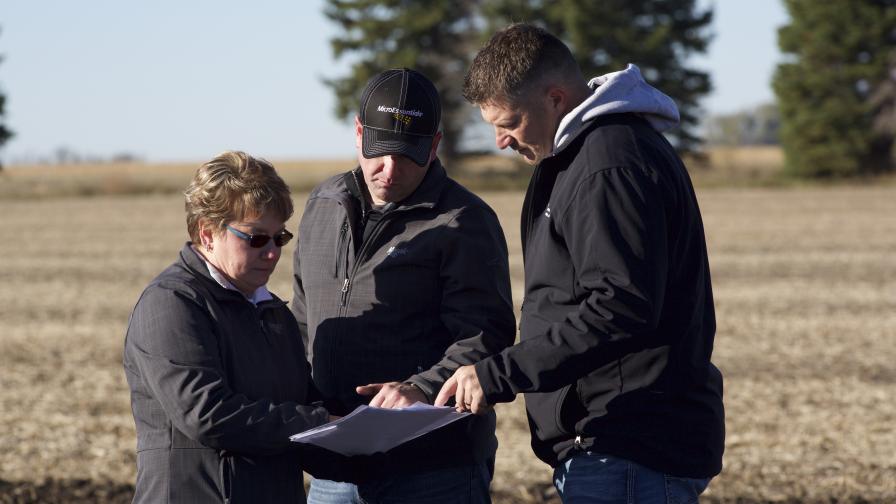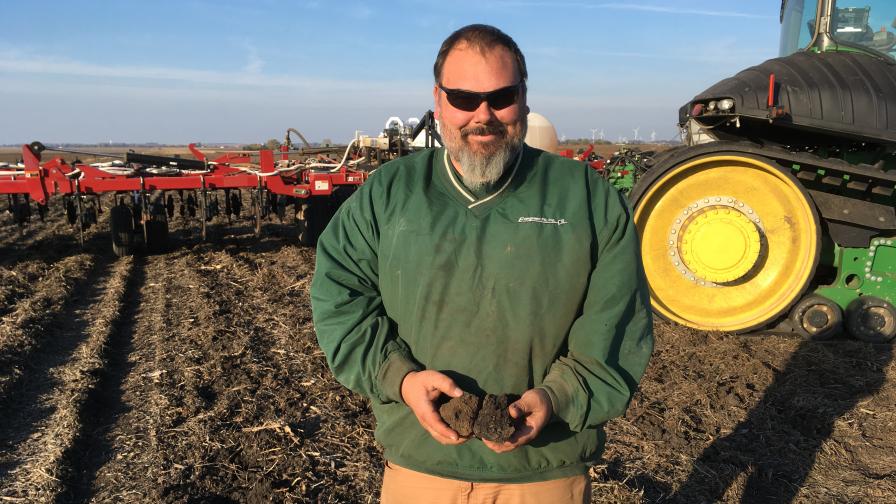How Ag Retailers Are Adding Value to Real-Time Data

Retailers and growers must budget time to properly analyze and interpret ag data and develop a sound plan of attack for short-, medium-, and long-term goals. Photo credit: Mosaic.
Editor’s note: This article originally published in December 2019.
Agricultural data, according to Ryan Humpert, has become a risk management tool that, for growers, is worth its weight in gold and pork bellies.
“We are living in a day and age where data has become a commodity in of itself,” Humpert, Senior Sales Executive with Agworld, says. “A phrase often heard is that ‘data is the new oil.’ Much like oil, data has become both powerful and useful.”
Yet there is a distinct difference between the two, Humpert adds. “There is a finite amount of oil and a presumably infinite amount of data. With this in mind, it is not so much about the accumulation of data, as that holds no true value. It is how it is presented and used.”
For growers, Humpert says, data is about protecting their assets and running their businesses. For ag retailers, he adds, data revolves around providing the best value and guaranteeing growers the most success. “By providing growers with the right information at their fingertips, when they need it, the agricultural industry can progress to new levels of efficiency, right-time decision making, and increasing returns more consistently,” Humpert says.
Farm Market iD CEO Steven Rao points to Walmart and its early use of data en route to becoming the world’s largest company by revenue.
“We all know how Amazon fundamentally changed the retail game. But a decade before Amazon, there was Walmart. Their secret: data,” Rao says. “Walmart used data in a variety of ways to connect various processes — purchasing, warehousing, sales, financials, marketing, etc. – and streamline savings and increase velocity. Traditionally, retailers had to trade off between low cost or high service. Thanks to data, Walmart was able to do both.”
How can retailers mimic Walmart? “Farm and grower data — not agronomy data — can help ag retailers increase efficiencies and insights to better serve the grower,” Roa says. “In a time of sustained low commodity prices, farmers have substantially limited spend potential compared to even a decade ago. The retailers who can best connect their products and services to the farmers’ specific needs and context will be the ones who win the game.”
One of those retailers is Mike Denton, the Owner of Oak Leaf Ag in Princeton, IL, and a client of Farmers Edge, which promotes itself as being the first company to bring variable-rate technology to farmers in Canada in 2005.
“Growers want to be more involved than they used to be,” Denton says. “If we think of one thing they want, it’s more information. They’re going to search out retailers who can help them with that. There are so many new products that are coming out. Growers want to learn more about what moves the needle. Data collection can be a huge part of this. The collection also helps with the decision-making process.”
Denton quotes Randy Dowdy, an award-winning high-yield grower based in Georgia: The difference between a good farmer and a great farmer is timing and attention to detail. “And that’s what ag data helps growers achieve,” Denton says. “Here in Illinois during the 2019 crop year, guys really struggled. Having a history of what works and when it works can be extremely helpful in these times.”
Data-driven decisions help take the emotion out of farming, Curt Woolfolk, M.S., Senior Agronomist with The Mosaic Co., says. “This is especially crucial when commodity prices and mother nature are less than ideal. Collecting, reporting, and analyzing data and then executing a plan is necessary for all businesses — including farming.”
Addressing Other Issues
Manufacturers and retailers vary in how they encourage growers to adopt data usage.
“We encourage our team of experts at every Nutrien Ag Solutions location to work together with their grower partners to evaluate the current state of information and any need for improved data integration and assimilation,” Brent Smith, Vice President of Marketing and Innovation, Nutrien Ag Solutions, says. “By growers using our collaborative digital customer portal, the digital tools they need are directly in their hands. Combining that information with the local expertise of their crop consultant, we can help them get the most out of their data.”

EvergreenFS utilizes the Veris iScan to map their customers’ soil variability. Photo credit: Veris Technologies.
Veris Technologies equips ag retailers with iScan soil-sensing modules that they can install on their customers’ planters and tillage tools. “These sensors help growers do a better job setting their equipment for changing field conditions, while also mapping soil properties for variable-rate application of inputs,” Tyler Lund, Director of Sales and Marketing, Veris Technologies, says. “In addition, ag retailers are outfitting their own custom application tools, like anhydrous bars, with Veris sensors. This reduces the cost of data collection and gets new growers into their precision ag program.”
Through its Answer Plot program, WinField United collects more than 6 million data points each year at nearly 200 locations across the country. “By testing and retesting our seed and crop protection products and competitor products, as well as varying field conditions, we’ve been able to provide retailers with localized insights they can then use to help farmers choose the best products for their soil types and management styles, regardless of the manufacturer,” Jim Hedges, Vice President of Seed Marketing, WinField United, says. “The data is collected using established protocols and analyzed with sound statistics, ensuring a level of predictability that crowd-sourced data or information from just a few sources can’t provide.”
One key challenge lies in the collection, usability, and traceability of data, according to Diego Angelo, Chief Commercial Officer, Sound Agriculture. He asks: “Do output and input systems work seamlessly? Can we collect data in a timely manner and in a usable form? Do we have the means to analyze and present the data in a format that can be used to make informed decisions?”
“Automating data capture and analysis will be an important step in helping us broaden trial capabilities and gather more robust insights,” Angelo says. “Another main challenge is related to the nature of crop enhancement products. Their performance is impacted by a significant number of factors and therefore, across environments. Explaining this reality to growers is not always simple, and pricing these products is a complex task. Data will allow growers to calculate the value gained from using a product in a particular field. Helping them use the right protocols and gather the right data, and then tying the results back is, and will be, a major undertaking.”






